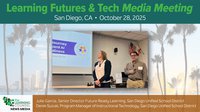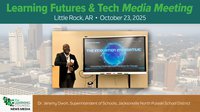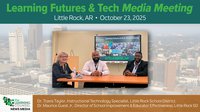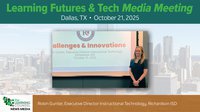“The greatest obstacle to discovery is the illusion of knowledge”
--Roger Stark
The Illogical Logic of Title I Funding
Title I of the Elementary and Secondary Education Act of 1965 was intended to narrow the educational achievement gap for children from families with low socio-economic status (SES). The concept of equal opportunity was part and parcel of the social justice initiatives of the civil rights movement, and the assumption was that providing extra funding to schools with large populations of low-SES students would even the playing field. There is considerable debate over the question of whether Title I has been successful. Whatever one’s view, however, large disparities remain in the achievement levels of students from different SES levels.
The premise of compensatory funding is simple: With an even playing field in terms of funding for teaching and school buildings and technology and curriculum, all students can achieve the same level of success. The underlying assumption is that students with different SES status are essentially the same, that they come to our classrooms with the same capacity to learn and the same ability to benefit from good educational resources. Unfortunately, this is not the case. In fact, as this article discusses, poverty has a significant impact on cognitive development and students from low-SES families (on average) are functionally different from their more advantaged peers in cognitive abilities. They come to school with less well-developed capacity to learn and to be successful in school and in life. But the story doesn’t end there. Research has shown that cognitive abilities can be developed and that low-SES students can catch up, both cognitively and academically.
More than an Achievement Gap — A Capacity Gap
One of the earliest and most compelling studies illuminating the gap in capacity for low-SES children was Hart and Risley’s ground-breaking research on early family life and its effect on children’s IQ (Hart & Risley, 1995). Their extensive longitudinal study confirmed that early home life has a profound effect on school readiness including children’s cognitive ability. They demonstrated that language exposure in early childhood correlates strongly with IQ and academic success later in a child’s life. Hart and Risley’s findings gave rise to the push for pre-school resources for low-SES students, including Head Start.
Despite such efforts, however, the achievement gap persists, and a growing body of research confirms the disparity in cognitive ability between children from different socio-economic backgrounds.
While the language disparity is widely known, the differences between children of different SES are not simply a function of how many words they have heard by age 3 and the extent of their vocabulary. More recently, research has shown a strong correlation between the degree of disadvantage and the magnitude of cognitive disparity. Moreover, these findings shed light on additional specific areas of cognition that are deficient which extend far beyond language acquisition.
While disparities among students are often most easily observed as difference in test scores or behavior or attitude, underlying these symptoms are differences in the basic cognitive processing skills students bring to the classroom. The following chart, derived from the work of Noble and others presents some key areas of cognitive function where significant differences related to SES have been found and provides examples of the impact on educational performance.
Cognitive Skills and Their Relationship to Educational Performance
| Cognitive System | Cognitive Skills | Examples of Educational Impact |
|---|---|---|
| Occipitotemporal/visual cognition system | The ability to perceive patterns and to visualize. | These skills impact a variety of non-verbal cognition tasks such as: Visual-spatial organization (e.g., organization of physical and mental workspace) Understanding non-verbal feedback in a social situation Understanding math and science concepts Visualization of information that has been read or heard |
| Parietal/spatial cognition system | The ability to perceive and mentally manipulate spatial relationships, including the ability to sequence. | These skills impact a variety of spatial learning tasks such as: Mathematics, especially geometry, and following a set of procedures Visual problem-solving and estimation Physical coordination, acuity |
| Medialtemporal/ memory system | The ability to form new memories and to assemble information from distributed storage sites that represent a whole memory. | These skills are necessary for any learning to take place, including being able to remember multiple pieces of relationships among similar concepts and ideas |
| Left perisylvian/ language system | The ability to learn and understand words, to distinguish sounds that distinguish similar sounding words. | These skills are essential for general linguistic competence and, specifically: Vocabulary development Phonological awareness (the ability to perceive sounds that distinguish similar sounding words) Grammar, pronunciation Communication, expression |
| Prefrontal/executive function system | The ability to control the focus of one’s attention | These skills enable multiple functions including: Deferring gratification Creating plans Making decisions |
| Anterior cingulated/cognitive control system | The ability to override competing | These skills are essential for: Choosing between alternatives in decision-making Ignoring distractions and staying focused in the classroom Being able to behave differently indifferent situations (e.g., classroom vs. home) |
| Lateral prefrontal/working memory system | The ability to retain and manipulate information over a short time span. | Working memory is essential for complex reasoning and problem solving, among other learning functions |
Developing the Capacity to Learn
Deficits in cognitive capacity do not disappear immediately when children are exposed to good teaching and good curriculum. In fact, such deficits are important barriers to being able to learn and often constitute limitations to the amount and pace of learning. Before students with deficits can learn, they must develop the capacity to learn. The questions then become whether the capacity to learn can be developed, and, if so, how this kind of remediation can be accomplished.
There is strong scientific consensus that cognitive ability can, in fact, be developed. As Pat Wolfe said in the latest edition of Brain Matters, “Younger brains have greater malleability than older ones, but it has been shown that neuroplasticity exists from the cradle to the grave. Recognizing and understanding these changes will help us gain a better understanding of what we can do to help each child or young person reach his or her full potential.” Or as David Shenk expressed it in The Genius in All of Us, “It’s not biology that establishes an individual’s rank to begin with (social, academic, and academic factors are well-documented contributors). No individual is truly stuck in her original ranking. Every human being (even a whole society) can grow smarter if the environment demands it.” And as Eric Jensen wrote in Teaching with Poverty in Mind, “We now know not only that students’ brains can change but also that we can play a part in changing them.”
Educators and researchers have suggested a variety of approaches. Most tend to be broad in scope and support the learning process in general, for all students. As a result, these approaches may take multiple years to have an impact and are unlikely to completely close the gaps of low SES students because they do not address students’ underlying cognitive skills in a targeted, comprehensive and systematic way.
Training to overcome cognitive deficits has been known for decades as it is practiced by various therapeutic disciplines, such as vision therapy, speech/language pathology and educational therapy. However, the application of such techniques to the problem of cognitive deficits related to SES is fairly new.
One of the primary barriers to the use of cognitive skills therapy as an educational intervention is the fact that it was traditionally performed one-on-one. Thus, the practices were neither scalable nor affordable in a school setting. However, the efficacy of technology-supported training procedures to develop cognitive skills such as attention, working memory and visual processing has been shown in an array of studies. Moreover, recent research shows how this can be accomplished in a school setting.
Cognitive Skills Development in Schools
Schools have begun to implement specific neurocognitive development programs addressing the very processes that have been determined to be most deficient in low-SES students with noteworthy results. The most successful is a software program that provides a comprehensive approach to building and integrating the cognitive skills most critical for learning, delivered in an engaging video-game format.
It has been used with a variety of populations, from low-performing to high-performing students of all economic backgrounds. And while it is not uniquely designed for students with low SES, it has been shown, in several studies, to impact the cognitive skills in the areas of deficit described above. Further, improved cognitive functioning is associated with positive changes in the trajectory of student academic progress in a relatively short period of time.
Edgar Evans Academy for Boys, Indianapolis, IN
The Edgar Evans Academy for Boys had been created to provide a structured, disciplined environment for male children in grades 4 and 5 with a history of disciplinary problems. The cognitive training software program was used in one 4th Grade and one 5th Grade class. The students came from low SES families. The 25 students were pre- and post-tested with a subset of the Woodcock-Johnson III Cognitive Battery, including tests of attention, working memory, visual processing, concept formation and planning. On the pre-test, the students, who had an average chronological age of 11 years, tested at an average cognitive age of 8 years and 2 months, almost 3 years behind their actual age. Following their use of comprehensive integrated cognitive skills training, these students tested at an average cognitive age of 14 years 2 months, a 6-year improvement.
Glenwood Schools for Boys and Girls, Glenwood, IL
Glenwood School is a community supported non-profit organization dedicated to helping economically and socially disadvantaged children from low income, mostly single-parent homes undergoing extreme hardship due to serious family and community issues. The 96 students in the 2nd through 8th grades used cognitive skills training and were pre- and post-tested with five Woodcock-Johnson III tests routinely used by Glenwood for student assessment. The average improvement on the cognitive tests ranged from 1.5 Grade Equivalents (GE) in 2nd grade to a high of 3.0 GE in 7th grade. Average improvement on the academic tests ranged from 0.5 GE in 2nd grade to 2.9 GE in the 8th grade. Improvement in the higher grades was greater than in the lower grades. Although smaller gains were seen in the younger grades, the magnitude of the gains was generally relative to grade level.
Lyons Elementary School, Tucson AZ
Students at Lyons Elementary who were significantly behind expectations in academic performance used the same comprehensive integrated cognitive skills training. Most participants were Title I students. Their progress in reading was measured using DIBELS ORF before and after their cognitive training, and again the following year. As expected, the 3rd and 4th grade students who used the program improved their rate of progress in reading fluency during the school year. Their progress continued to accelerate during the next school year, closing the gap between target and actual performance by 50-75 percent. This supports the idea that changing underlying cognitive skills is a critical factor in helping low-SES students change the pace of their progress and catch up more rapidly. Almost all students in this population with IEPs made sufficient progress toward their goals.
These studies suggest that developing students’ cognitive skills can enable them to narrow and ultimately close the achievement gap. It is important to recognize, however, that these students still require quality teaching and quality curriculum. With a greater capacity to learn, these students will be able to benefit from the learning opportunities they are afforded. As these new neuroscience-based interventions become more broadly applied and additional longitudinal data becomes available, we expect that the long-term impact of evening the playing field cognitively as well as instructionally will be evident.
Conclusion
Neuroscience research has shown the importance of underlying cognitive skills to academic and life success. It has also shown that students from disadvantaged backgrounds have cognitive skills that are less developed than their more fortunate counterparts and are therefore not as prepared to learn. Interventions that seek to level the playing field cannot assume that all low SES students have the developed capacity to learn, even when provided with the same opportunities as higher SES students.
Interventions for Title I students have traditionally focused on external factors such as teaching, curriculum, environment, technology and other resources. Interventions that address students’ internal capacity to learn and develop critical cognitive skills are required to enable students to catch up and to benefit from those resources. This cognitive improvement has translated into dramatic improvement in the skills most necessary for learning and into accelerated academic progress with the potential to close the educational performance gap.
About the authors

Betsy Hill is President of BrainWare Learning Company, a company that builds learning capacity through the practical application of neuroscience, helping parents unlock their child’s learning potential. She is an experienced educator and has studied the connection between neuroscience and education with Dr. Patricia Wolfe (author of Brain Matters) and other experts. She is a former chair of the board of trustees at Chicago State University and teaches strategic thinking in the MBA program at Lake Forest Graduate School of Management where she received a Contribution to Learning Excellence Award. She received a Nepris Trailblazer Award for sharing her knowledge, skills and passion for the neuroscience of learning in classrooms around the country. She holds a Master of Arts in Teaching and an MBA from Northwestern University. Betsy is co-author of the new book, “Your Child Learns Differently, Now What?”

Roger Stark is Co-founder and CEO of the BrainWare Learning Company. Over the past decade, he championed efforts to bring the science of learning, comprehensive cognitive literacy skills training and cognitive assessment, within reach of every person, and it all started with one very basic question: What do we know about the brain? From that initial question, Roger Stark pioneered the effort to build an effective and affordable cognitive literacy skills training tool, based on over 50 years of trial and error through clinical collaboration. He also led the team that developed BrainWare SAFARI, which has become the most researched comprehensive, integrated cognitive literacy training tool delivered online anywhere in the world. For more, follow BrainWare Learning on Twitter @BrainWareSafari. Roger is co-author of the new book, “Your Child Learns Differently, Now What?”











